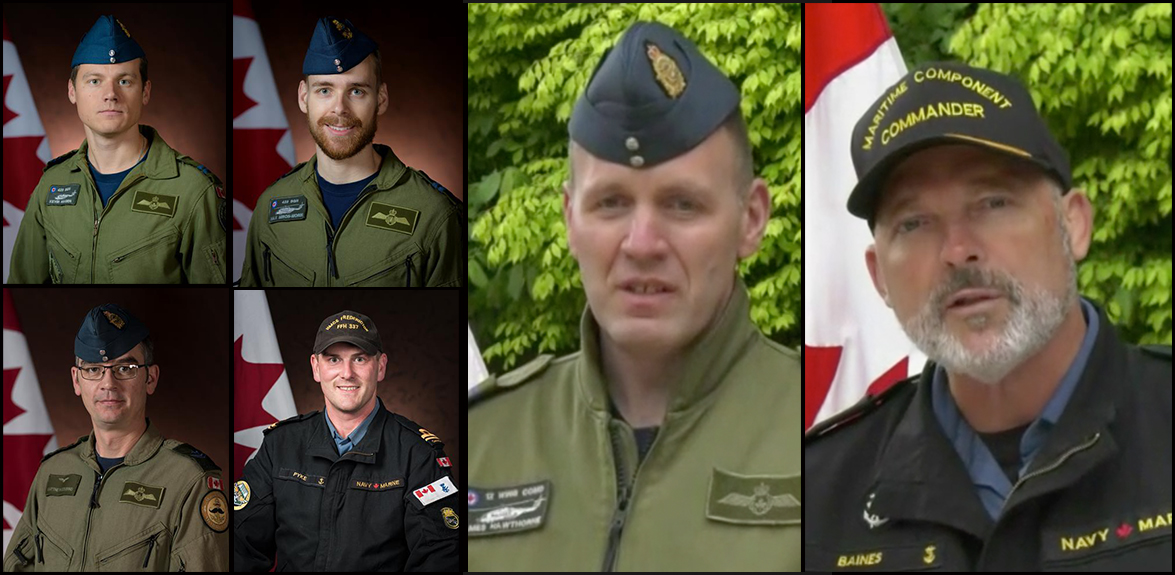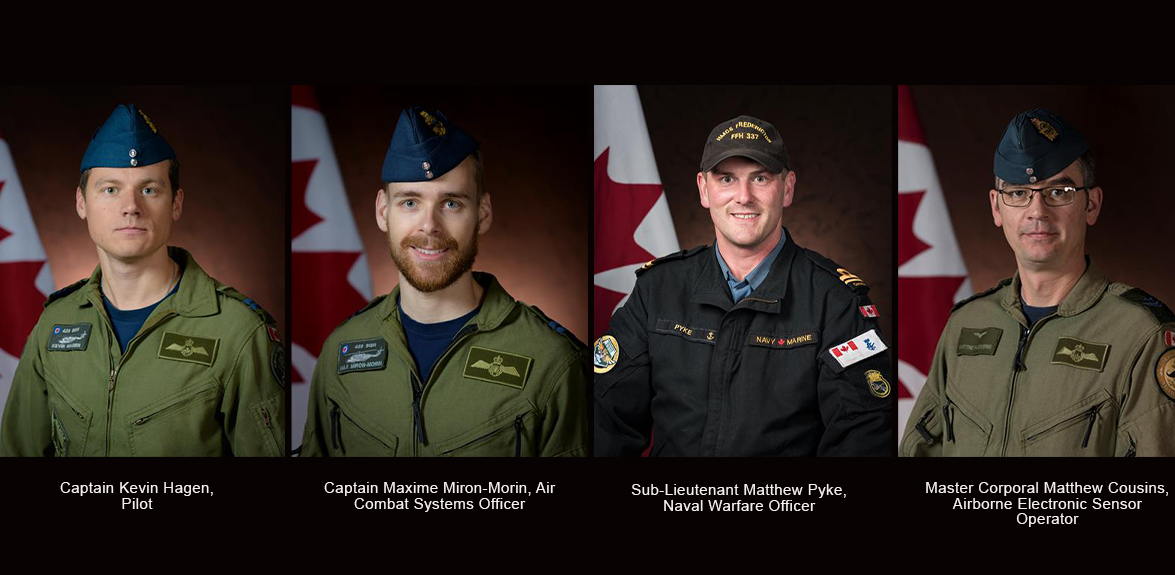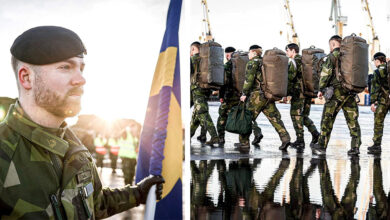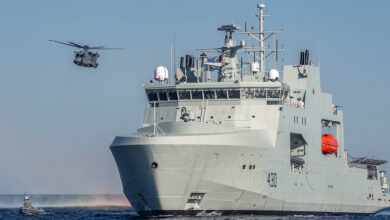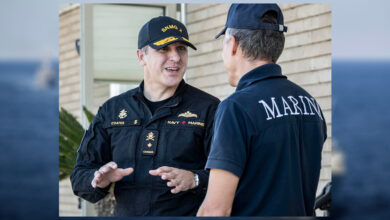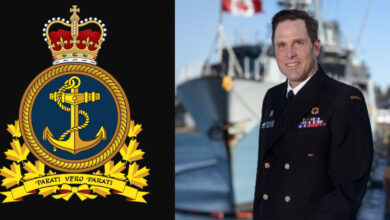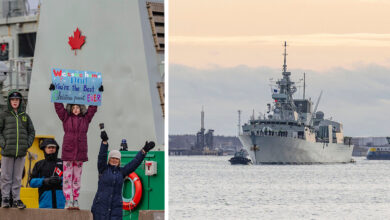Operations
Search and Recovery Mission wraps up for Stalker 22 and CAF Personnel
Above image: left, missing CAF personnel, top, Captain Kevin Hagen, Captain Maxime Miron-Morin, bottom, and Sub-Lieutenant Matthew Pyke, Master Corporal Matthew Cousins. Middle image,12 Colonel James Hawthorne Commander 12 Wing/CFB Shearwater. Right image, Maritime Forces Atlantic Commander Rear-Admiral Craig Baines at the press conference this afternoon.
Multiple pieces of the CH-148 Cyclone helicopter and recovery of partial remains of the fallen CAF personnel have led to the decision to conclude the Search and Recovery Operation in the Ionian Sea.
During a press conference held his afternoon at NJ Jetty, Her Majesty’s Canadian Dockyard, in Halifax, Maritime Forces Atlantic Commander Rear-Admiral Craig Baines gave an update regarding the mission, with Colonel James Hawthorne Commander 12 Wing/CFB Shearwater on hand to help field questions from the media.
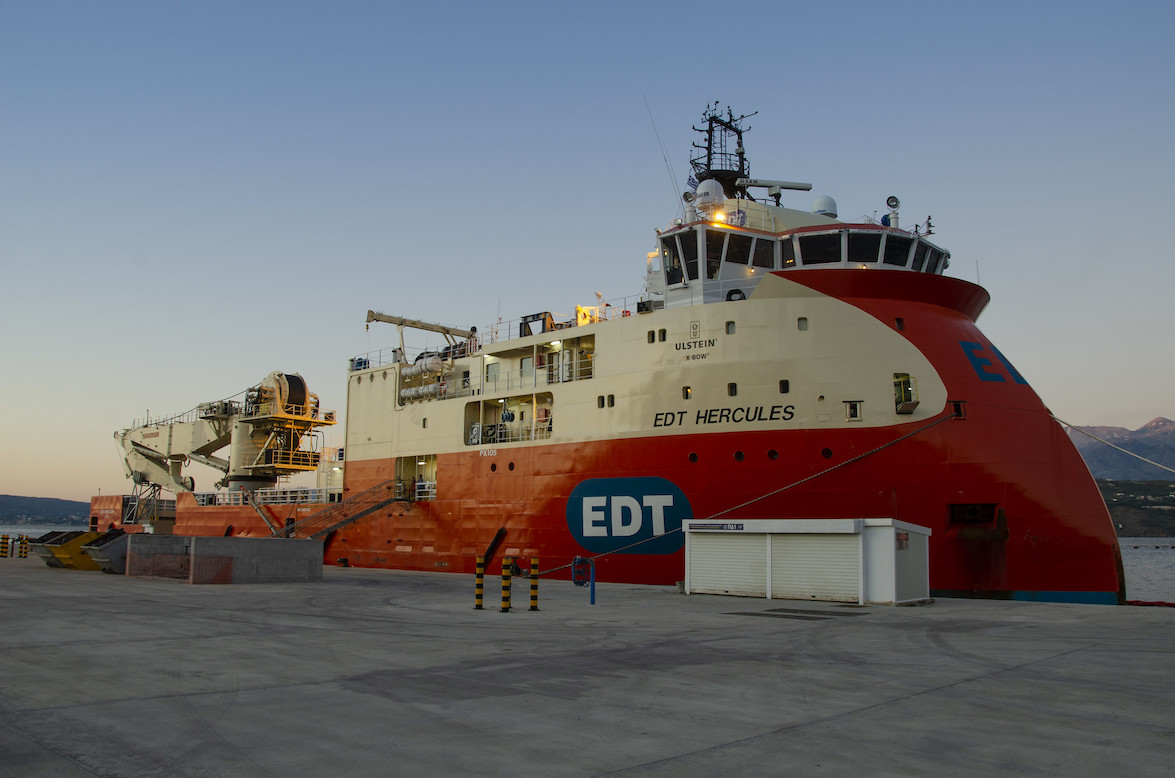
“At 10:00 a.m. Atlantic time yesterday, the decision was made to conclude the recovery operation that was led by a combined Canadian Armed Forces (CAF) and United States Navy (USN) team. After eight days over the crash site we achieved what we set out to accomplish – we located the helicopter, we have recovered some remains of our fallen and we have retrieved multiple pieces of the aircraft that will assist in the ongoing flight safety investigation,” said Baines.
He noted they had not identified any of the remains as of yet.
“It is unknown at this time whether we have found everyone,” said Baines. “This will only be completed once the remains have been brought to Toronto where any positive identification, as well as confirmation of the number of personnel found, will be done using scientific methods by a Forensic Pathologist.”
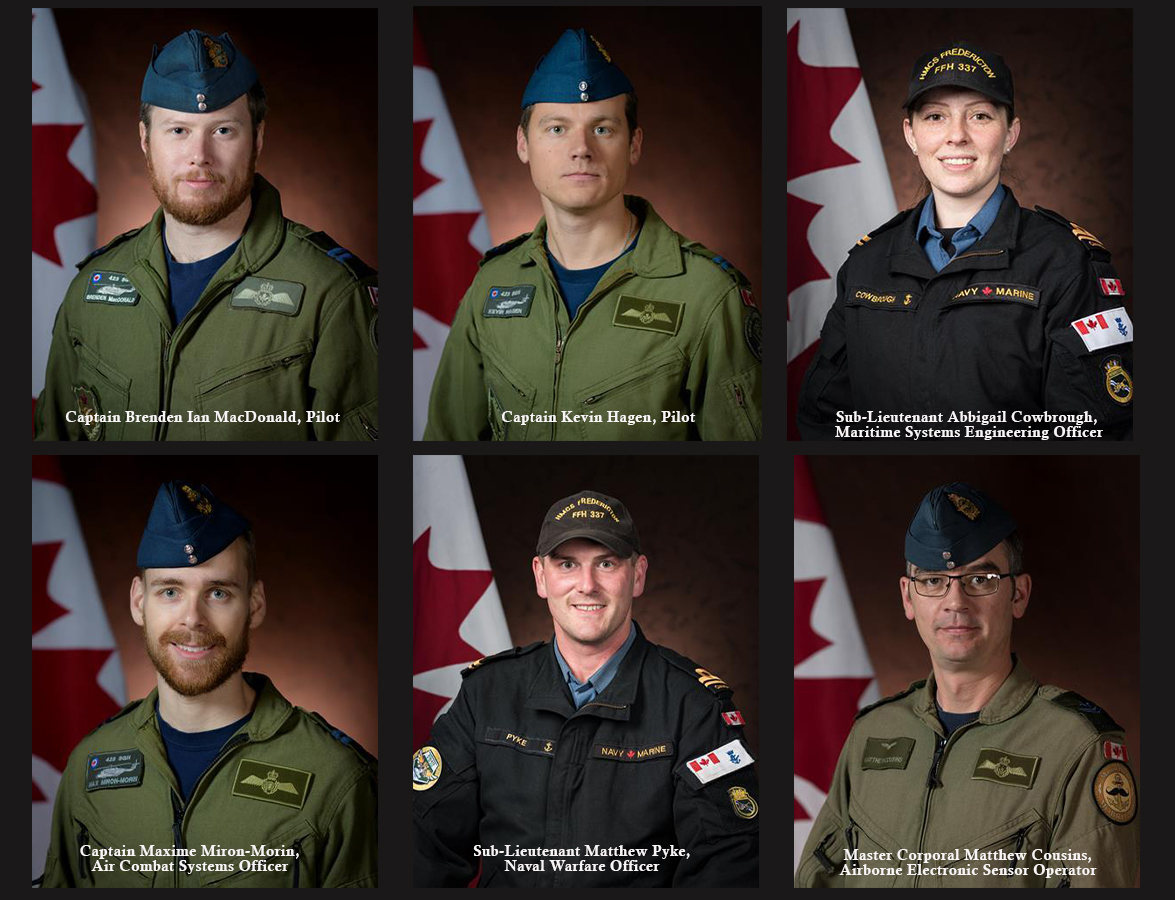
Once the remains have been identified, the personnel’s names will be released to the families and then the public.
He noted the fallen military personnel remains should be in Toronto this weekend.
The CH-148 Cyclone helicopter, call sign Stalker 22, crashed in the Ionia Sea on April 30, 2020. Six CAF personnel lost their lives in the crash.
Sub-Lieutenant Abbigail Cowbrough’s body was found as were partial remains of Captain Brenden Ian MacDonald, Pilot.
CAF personnel still missing:
-
-
-
- Captain Kevin Hagen, Pilot, originally from Nanaimo, British Columbia
- Captain Maxime Miron-Morin, Air Combat Systems Officer, originally from Trois-Rivières, Québec
- Sub-Lieutenant Matthew Pyke, Naval Warfare Officer, originally from Truro, Nova Scotia
- Master Corporal Matthew Cousins, Airborne Electronic Sensor Operator, originally from Guelph, Ontario
-
-
The helicopter was deployed with HMCS Fredericton under Operation REASSURANCE as part of the Standing NATO Maritime Group 2 (SNMG2).
The search was a joint effort between the Canadian Armed Forces (CAF) and the United States Navy (USN) search and recovery team.
The sequence of events for the Search and Recovery Operation are summarized as follows:
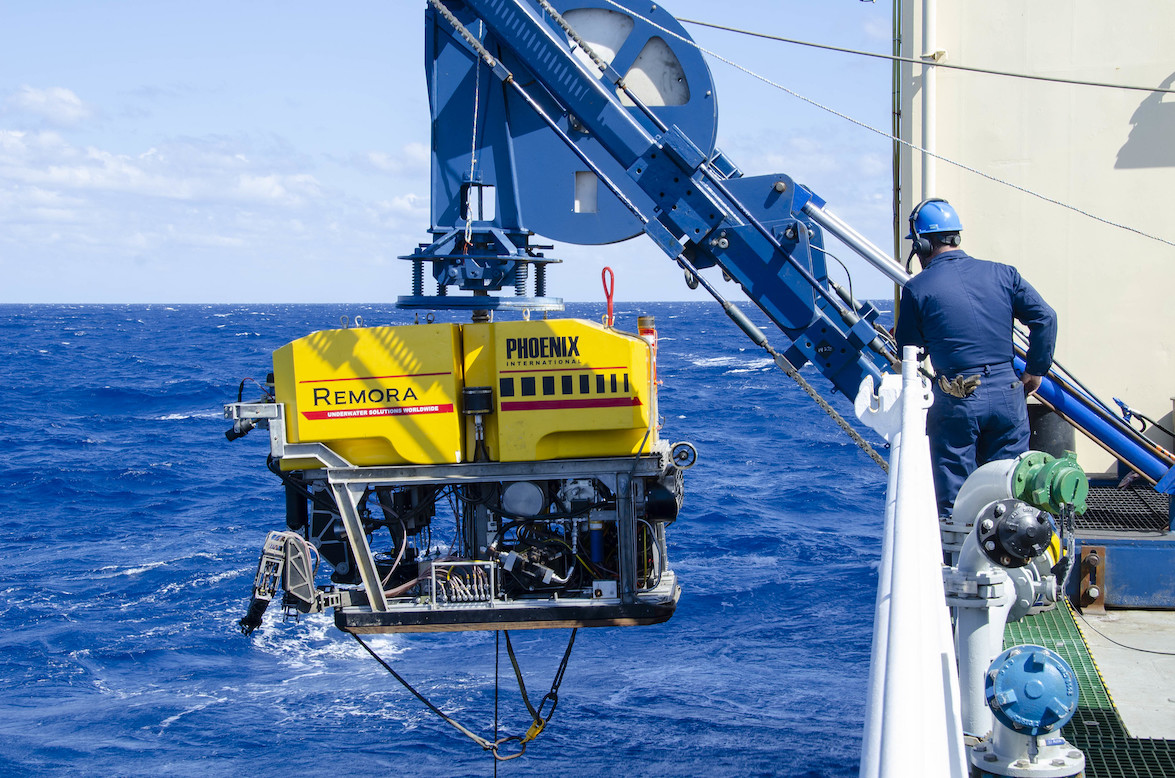
On Monday, May 25th, our recovery team departed Souda Bay, Greece, on the EDT HERCULES, which is an offshore multi-purpose support vessel that served as the platform for the deep-sea recovery.
The EDT HERCULES arrived at the search site approximately 220 nautical miles east of Catania, Sicily on Tuesday, May 26th at roughly 7:00 p.m. Atlantic time. After about two hours of preparation, the team was able to get the ROV in the water and quickly begin the search for Stalker 22.
The recovery team used a United States Navy “Remora” Remotely Operated Vehicle, or ROV with a Fly Away Deep Ocean Salvage System (FADOSS) that was integrated for operations with the salvage vessel. This ROV was selected as it has the ability to operate to a depth of 6,000 metres; twice the expected depth of where we had anticipated the CH-148 to be located on the ocean floor.
For the most part, the weather conditions and the sea state over the past week have allowed the team to operate the ROV and locate the debris field in very short order. It took the Remora approximately three hours to reach the ocean floor and within eight minutes, the sonar and cameras on the ROV revealed a large portion of the helicopter fuselage, which became the centre point for the rest of the search.
Given that we had very accurate data on where the helicopter entered the water, we did not have to rely on the underwater locator beacon, and would have only rigged the detection system to the ROV if we had difficulty locating the helicopter. Given that we discovered it so quickly, it did not end-up being required and we cannot confirm if it was still emitting a signal.
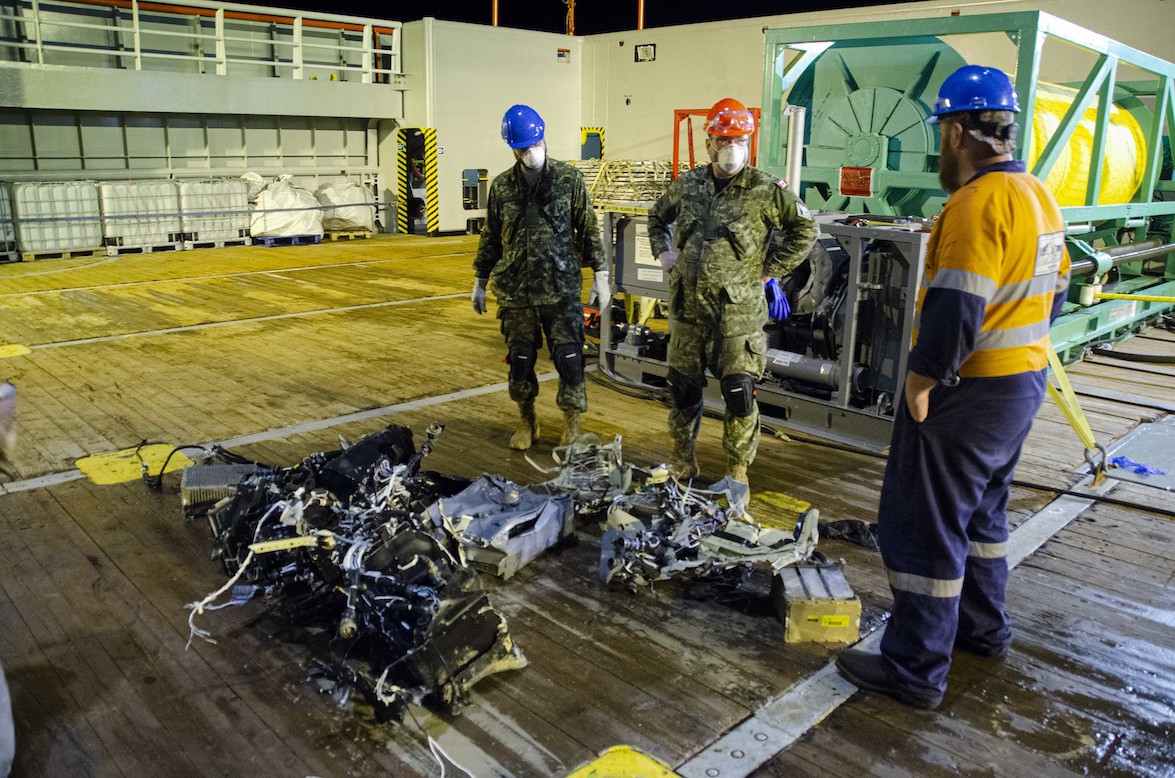
At over 3143 meters deep with a debris field that spanned approximately 260 metres by 230 metres, aircraft components were found in a number of clustered groups, to include many smaller pieces that were scattered individually across the ocean floor.
Unfortunately, no portion of the main cabin was left intact following the crash, including the external cockpit structure. The largest piece at the wreckage site was the rear deck/ramp area of the helicopter and the next largest intact piece was the tail pylon and tail rotor blades.
At this point, we are not able to provide any additional information about the individual pieces that were recovered given the current flight investigation.
It should be noted that given the challenges associated with a recovery at this depth, we made the conscious decision to recover all discovered remains and only pieces of equipment that would be useful to the investigation.
In terms of next steps, the recovery team onboard EDT Hercules is now enroute to Augusta Bay, Italy, which is proximate to Naval Air Station Sigonella. The ship is expected to arrive early tomorrow morning. Upon arrival, our next priority will be to prepare the remains for transport back to Canada, which we are anticipating will happen as early as this weekend.
I would like to echo comments made by the Chief of the Defence and extend my thanks and external gratitude to the United States Navy and the Captain and crew of the EDT Hercules. Throughout this whole process they have provided outstanding support and on behalf of the Royal Canadian Navy, Royal Canadian Air Force, and the families of our fallen I would like to thank them for all they have done to help us bring our shipmates home.
“In closing, and speaking more directly to the families of our fallen, it is our hope that this operation provides some closure to you. Please know that the Canadian military family grieves with you,” stated Rear-Admiral Baines.


